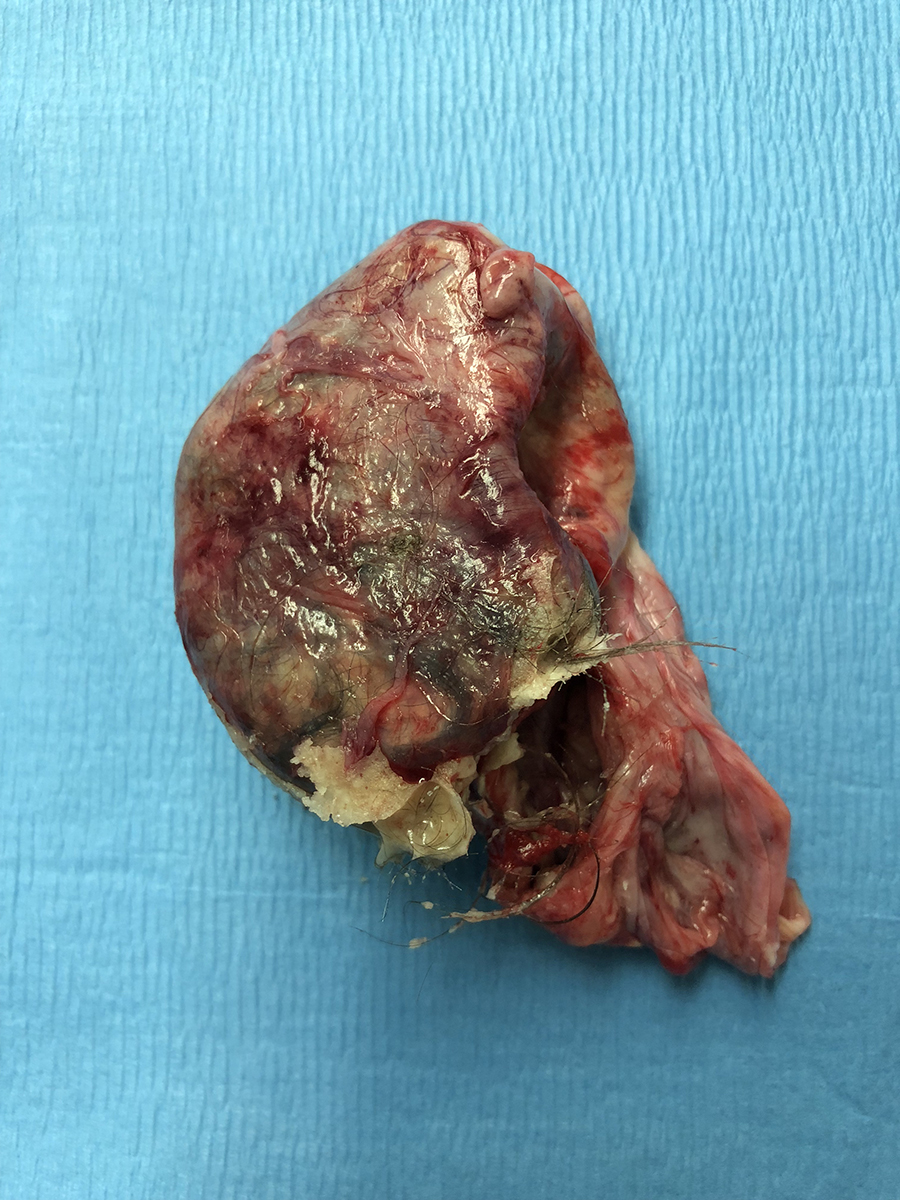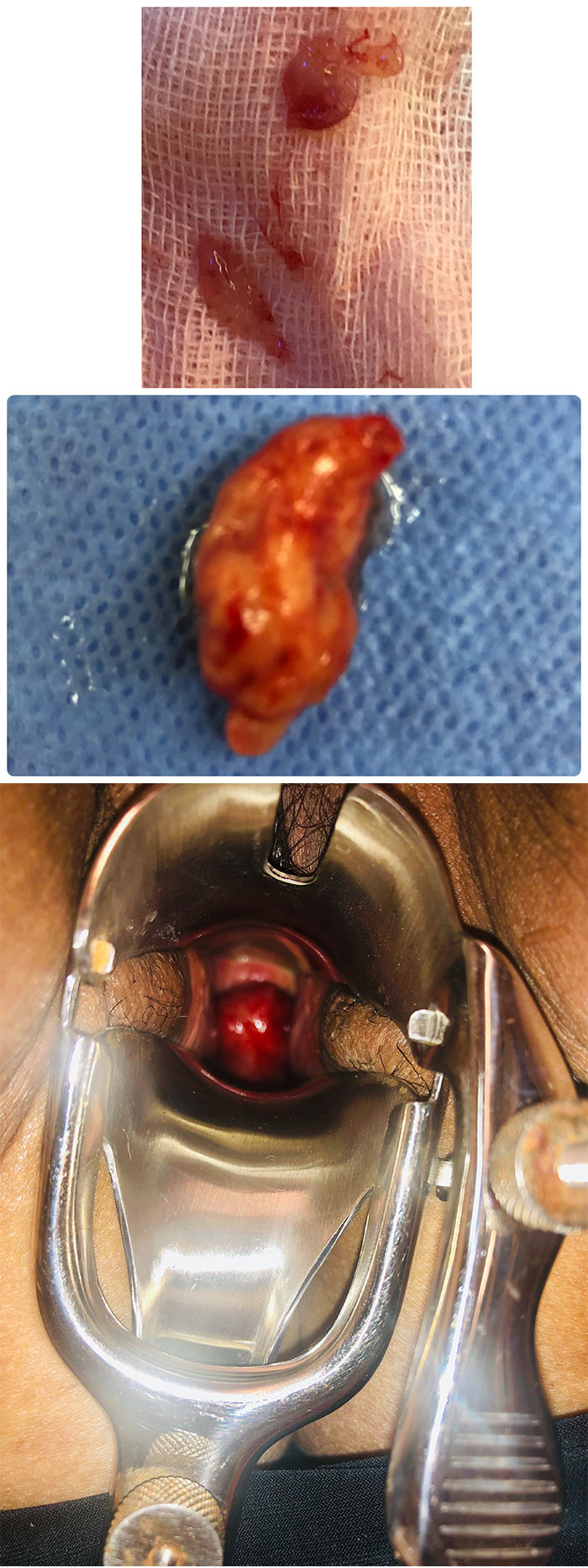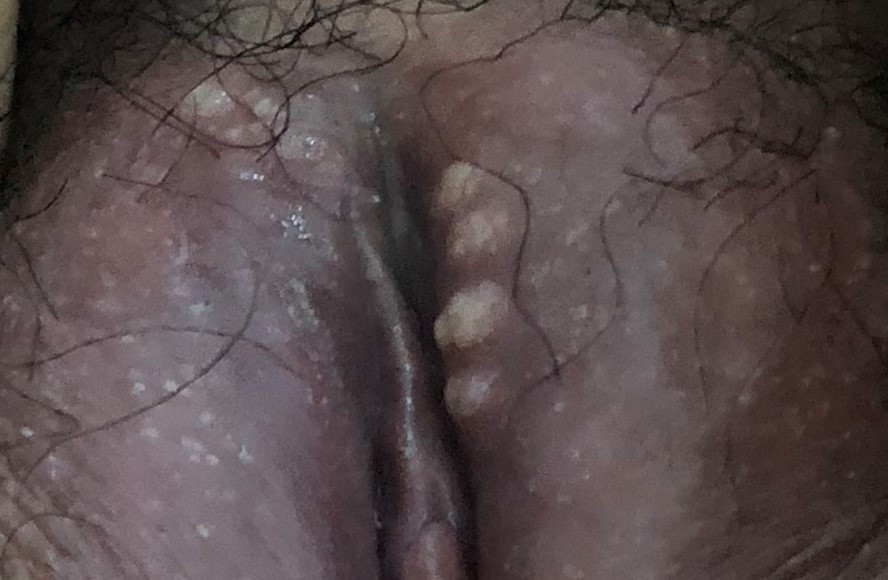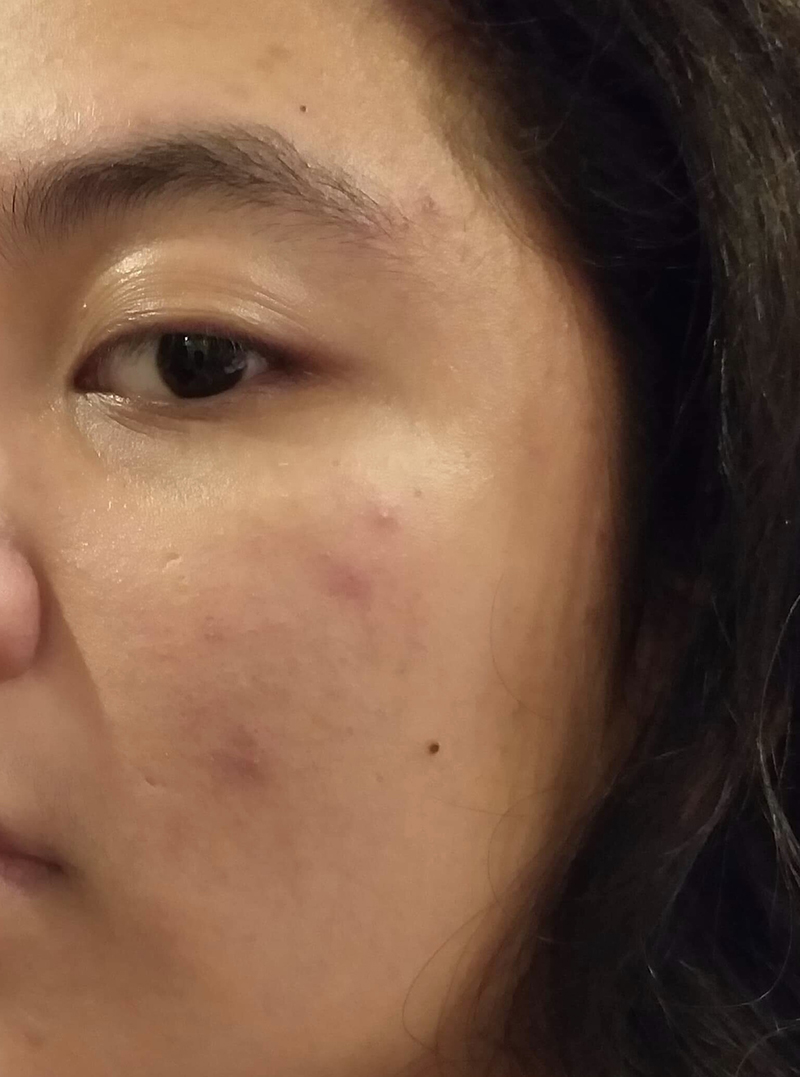Monthly Archives: October 2018
CAUSES OF CANCER IN YOUR HOMES & SURROUNDINGS
REBECCA B.SINGSON, M.D., FPOGS
Contrary to what many people think, genes account for only 30% of total cancer risk. Most cancers actually result from poor dietary habits, smoking, alcohol consumption, lack of exercise, and exposure to environmental toxins. In fact, so toxic is our environment that the World Alliance for Breastfeeding Action (WABA) and the International POPs (Persistent Organic Pollutants) Elimination Network (IPEN) has declared that if every child born anywhere in this world was tested after birth, we would discover that she or he already has a body burden of toxic chemicals like dioxin, polychlorinated biphenyls (PCB’s), mercury, pthalates, pesticides, flame retardants, bisphenol A and other dangerous substances resulting from transplacental transmission during the prenatal period. These substances are potent hormone disrupters or EED’s (Environmental Endocrine Disrupter meaning they are capable of interfering with the action of hormones like estrogen by increasing or decreases its hormonal effects). This tells us that from the moment of conception, the process of immune system suppression leading to cancer already started from the womb. In fact, by age 6, some kids have already accumulated one half of their total lifetime amount of cancer causing chemicals!! So, it is really no surprise why we are diagnosing breast cancer in women in their 20’s or 30’s with no family history of breast cancer.
FREE RADICALS
Environmental agents cause havoc on our bodies by increasing our load of free radicals. Free radicals are are unstable molecules that seek to steal an electron from another molecule to neutralize it. In the process, it acts like a spitfire from a chimney burning holes on your carpet, only in this case, its your human cells. Everytime you breathe, 3-5% of your oxygen is converted to free radicals as well as when your cells burn food for energy (a process called oxidative metabolism). On top of these, exposure to lead, pesticides, cadmium, ionizing radiation, alcohol and cigarette smoke all serve to increase free radical activity.
To give you an idea of how much damage free radicals can do, imagine that these rebellious molecules strike and fracture every single one of your DNA molecules 10,000 times a day. About 9,900 of these breaks in the DNA strand are restored to normal by DNA repair enzymes. About 100, or 1 percent, escape the enzymes’ notice. This unrepaired damage accumulates over time, setting the stage for atherosclerosis, cancer, and other degenerative diseases. You can see why slowing the damage–by increasing antioxidant protection—is an anti-aging regimen. Meats, poultry, fish, dairy products, and eggs are devoid of protective antioxidants and have instead abundant supplies of free radical-forming fats. They’re also likely to contain residues of pesticides, herbicides, and other free radical-producing toxins
Damaged DNA in the nucleus may provide the wrong genetic code leading to too much protein synthesis and/or cell growth which results in cancer. Malins (1996) determined that women with metastasized breast cancer exhibit twice as much free-radical damage to the breast tissue DNA than do women with localized cancer. The researchers, therefore. concluded that antioxidants, especially vitamin C, may play a crucial role in controlling free radical damage to the DNA in breast tissue and may help prevent metastasis.
TOXIC METALS
Several hundred years ago we did NOT have the burden of toxic metals in our bodies that we now do, and we also did not have such an exposure to free radicals. Free radicals are increased in activity and quantity by bumping into toxic metals in the body. If you remove the toxic metals from the body, you then greatly reduce the activity and the number of free radicals. Here are the two most common toxic metals we are heavily and unknowingly exposed to.
MERCURY – According to FDA toxicologist Mike Bolger, Ph.D., approximately 2,700 to 6,000 tons of mercury are released annually into the atmosphere naturally by degassing from the Earth’s crust and oceans. Another 2,000 to 3,000 tons are released annually into the atmosphere by human activities, primarily from burning household and industrial wastes, and especially from fossil fuels such as coal. Pregnant women and women of childbearing age, who may become pregnant, however, are advised by FDA experts, to limit their consumption of shark and swordfish to no more than once a month. These fish have much higher levels of methyl mercury than other commonly consumed fish. Mercury is also used in fluorescent lights, pesticides, dental fillings & seed coatings. Mercury thermometers can break in a child’s body but this is no cause for alarm since it is poorly absorbed and can be excreted in a the child’s stool but if liquid mercury spills in the house, it vaporizes readily and is easily absorbed through the lungs.
LEAD – heavy metal found in lead crystals, plumbing, PVC, batteries, old paint, tin cans. The Clean Air Act of 1970 in the U.S. and subsequent regulations reduced lead in the atmosphere by 90%. The single most important action was the successful removal of lead from gasoline. The Lead Paint Poisoning Prevention Act of 1971 banned the use of lead in household paint. All houses built before 1960 have leaded paint. Of houses built between 1960-1974 20% have leaded paint. Peeling paint is a serious health hazard. Only experienced professionals should remove it. Household drinking water may contain excessive amounts of lead from the pipes or the lead solder. Ceramic dinnerware may contain lead from the glaze of clay. Therefore used only ceramic dinnerware that has a written statement that it is lead free..
ENVIRONMENTAL POLLUTANTS
Other environmental poisons, from pollutants in the air you breathe to chemicals in the water you drink, generate free radicals as well. While you have less control over them than over your diet, you should still limit your contact with them as much as you can. In fact there are many of these free-radical causing toxins right in your very homes and surroundings increasing your predisposition not only to breast cancer but all other types of cancer as well
DIOXINS – are a family of 75 compounds released into the environment during processes such as bleaching pulp and paper, pesticide production, or when plastic, especially PVC and other chlorinated compounds are manufactured or are burned in older incinerators for example, medical waste like IV bags burned in hospital incinerators can release dioxins which are potent hormone disrupters. More than 95% of all dioxins result from human industrial activity, are emitted into the air then deposited on grass and trees and consumed by cows and other animals or is deposited in lakes and streams and ingested by fish. Since these compounds are insoluble in water, are bound to fatty substances and resilient against degradation, they accumulate in the food chain. Ninety-five % of our exposure to dioxin is through meat, fish and dairy products. In Oct. 1977, dioxin was upgraded to a known human carcinogen, one of the most potent ever tested.
POLYVINYL CHLORIDE (PVC) – or vinyl, is one of the most common of all plastics, used in everything from flooring to children’s toys. The manufacture of PVC generates large quanitities of dioxin and burning PVC plastic can create dioxins, especially in older incinerators. However, new, high tech incineration does not produce dioxins. PVC plastic has been called one of the single most environmentally damaging and least recyclable of all plastics.
POLYCHLORINATED BIPHENYLS (PCB) – class of 209 related oily compounds that don’t burn easily, hence making them excellent as electrical insulator, fire retardants coating wood and plastic, adhesive and lubricant. They enter the environment during manufacture, during spill while transporting, leaks from transformers & burning of waste in incinerators. Production has been banned since 1970 but is still used in other countries. The fish, dairy and poultry we eat are the most consistent sources of PCBs in the food chain. PCBs are found to bind to estrogen receptor sites & at least 24 studies of human populations show a possible link between PCBs and breast cancer.
PTHALATES – class of chemicals used as plasticizers to make plastics more flexible. Used in food packaging materials like cling wrap and food plastics, car parts, toys, blood bags, inks, nail polish, fragrances, antiperspirants, footwear, shower curtains, upholstery, adhesive for medical devices, carpet backing, blister packing, toothbrushes. Soft cheeses, chocolate bars, chips, cakes packaged in paper and cardboard, sausages, contain pthalates, 59 samples from fifteen brands of baby milk, tested by the ministry of Britain in 1996 all revealed pthalates. Pthalates were also found in fruit juices and distilled water possibly leaching from the plastic container. It was also discovered that when some plastic baby feeding bottles were sterilized, pthalates leached into the milk which is why Evenflo brought back tempered glass baby feeding bottles back to the market. Pthalates have been associated with premature breast development, which is linked to early onset breast cancer.
BISPHENOL A – a component of plastic.It can leach into our bodies from food and beverage packaging since they coat metal products like tin cans and bottle tops including baby formula bottles as well as water supply pipes. Used in polycarbonate plastics, dental sealants in our children’s teeth and in composites (the alternative to the mercury in amalgam fillings. Six different laboratories have demonstrated that (BPA) bisphenol A is an estrogen as there are at least two published in vivo studies showing that it is almost as potent as our natural hormones although not as potent as DES. Munoz de Toro (2005) showed that perinatal exposure to BPA in particular, and to estrogens in general, may increase susceptibility to breast cancer.
PESTICIDES – DDT has been linked to breast since women with breast Ca were found to have higher body levels of DDT then women of the same age without cancer. Acc. to WHO, the countries have high exposures to DDT are China, India and Mexico since they still manufactures and use DDT. Much of our pesticide exposure is through our agricultural products laced with pesticides so it is best best to eat only organic produce.
Pesticide poisoning can occur when classrooms or buildings are sprayed for cockroaches, termites, mosquitoes, etc. Many pesticide labels claim people can return to a sprayed area 1-2 hours after application. It is best to keep children away and to thoroughly ventilate area prior to return.
P-chlorobenzene-a registered pesticide which is an active ingredient in moth repellants is found in all types of air fresheners: liquid, spray and solid. This chemical has been demonstrated in tests by the U.S. National Toxicology Program to cause cancers in rats and mice. The pure white cakes commonly placed in urinals and public toilets to freshen the air are made of 100% p-dichlorobenzene.
THE VALUE OF BREASTFEEDING
Maybe one explanation why mothers who breastfeed have a smaller incidence of breast cancer is that breastfeeding considerably lessens the mother’s body burden of toxic chemicals. The chemical levels in mother’s milk become lower during each individual feeding, and are even lower after a three to six month period of breastfeeding, and are also lower for subsequent children.
WHAT SHOULD BE DONE
The public’s health is at stake and cannot to wait for proof that certain chemicals cause breast cancer before the concerned agencies move to prevent the occurrence of such a devastating disease. The following measures should at least be taken:
- Educate the public about the health effects of radiation and on how to reduce their exposure
- Tests should be done externsively on all chemicals to check its effect on humans. & phase out chemicals known to cause cancer
- Corporations should be made liable for hazardous practices .
- Establish a comprehensive biomonitoring program to measure the presence of chemicals in people and track resultant health outcomes.
Infertility Part II
Dr. Rebecca B. Singson, M.D.
TUBAL FACTOR IN INFERTILITY
In 30% of patients who cannot get pregnant, there may be problems with the fallopian tube. If a patient has had a ruptured appendix or a septic abortion, an ectopic pregnancy, a previous pelvic or tubal surgery, a history of pelvic inflammatory disease or has use an IUD, the chances of a tubal problem increases in an infertile patient. If the patient has had multiple sexual partners, the chances of having chlamydial infection increases as well. Chlamydia is a sexually transmitted disease which may produce silent damage on the tubes, meaning the patient is unaware that she is infected yet the disease is damaging her fallopian tubes. After one episode of chlamydial salpingitis (infection of the fallopian tubes with Chlamydia), the incidence of infertility is 11-12%. After 2 episodes, the incidence increases to 23% and after 3 episodes, 54%. The relative risk of tubal infertility is 2.6 fold greater for women who ever used an IUD compared with those who never used one. Women who had only one sexual partner had no increased risk of primary tubal infertility associated with IUD use. Tubal problems can be evaluated by doing a hysterogram (using a fluoroscope) or a sonohysterogram (using an ultrasound) or by laparoscopy under direct visualization. In a hysterogram, a dye is injected through the cervix using a cannula under fluoroscopic guidance to determine if the tubes are open and if there are any distortions in the uterine cavity. A sonohysterogram involves the same procedure using an ultrasound instead of x-ray guidance.
UTERINE AND PERITONEAL FACTORS
The chances that a woman might be infertile due to uterine factors is only 2%. Myomas, which are benign tumors in the muscle of the uterus, are the most notorious for causing distortions in the uterine cavity. Not all myomas need to be removed in case of infertility. The obstetrician needs to evaluate if the myoma is large enough to cause infertililty either by competing for blood supply with the embryo or causing distortion of the uterine cavity or blocking the entrance to the fallopian tube. In patients who have had a history of a previous D & C for a miscarriage, the uterus might be overcuretted causing adhesions on the uterine lining, preventing the sperm from reaching the tubes. This is a rare occurrence but in such instances, the adhesions may be lysed and an IUD placed to prevent the adhesions from recurring.
UNEXPLAINED INFERTILITY
Unexplained infertility is diagnosed when a woman has had at least 2 years of infertility despite a normal history and physical examination, having adequate sexual contact with a partner with a normal sperm count, regular monthly menstrual cycles with evidence of ovulation, adequate luteal phase of the menstrual cycle of at least 12 days, normal bacteriologic cultures, immunologic tests, hormonal profile, and ultrasound studies.
IMMUNOLOGIC FACTORSs
Immunologic factors have been found in upto 40% of couples with unexplained infertility. It remains controversial even among infertility experts but it may result from depletion or destruction of sperms or inhibition of transport of sperm in the female genital tract. In males, vasectomy, testicular torsion, or trauma, or an infection, can result in an immunologic reaction that can cause formation of antisperm antibodies. Women who undergo artificial insemination, on the other hand, can develop antisperm antibodies. Infection or inflammation may also increase the probability that sperm will interact with the body’s immune system components.
APAS Syndrome is another controversial disease entity which not all infertility experts are in agreement with. Essentially, it is caused by the mother producing antibodies against phospholipid antigens resulting in clotting of veins and arteries supplying the embryo, causing failure of implantation of the embryo. A blood test to check for a panel of antibodies can clinch the diagnosis. A reproductive immunologist is very helpful in managing these problems when diagnosed.
INFECTION
Subclinical infections have been known to cause infertility over the past 30 years. Mycoplasma are microorganisms as small as a large virus but have no cell walls. Research has shown a greater prevalence of genital mycoplasma in cervical mucus and semen of infertile couples compared to fertile couples. The two kinds of mycoplasma commonly recovered are Mycoplasma hominis and Ureaplasma urealyticum. There is evidence that the sperm counts of men positive for ureaplasma tend to have more abnormal sperms with poor motility. The quality of the sperm has been found to improve after antibiotics therapy to eradicate ureaplasma. This is not universally documented though and upto 50% of men with normal sperms have been found to be positive for mycoplasma cultures. Controversial as it may seem, it is still considered prudent to treat patients with positive cultures with either doxicycline or tetracycline before any invasive procedures are planned on an infertile couple.
LUTEINIZED UNRUPTURED FOLLICLE (LUF)
This phenomenon means that the woman’s ovary goes through the selection of an egg to be released, makes it grow in size with the proper release of hormones, but in the end, the egg never leaves the ovary so there is no chance to meet the sperm in the fallopian tube. The ovum remains in the ovary and regresses there. It is unkown why this happens and it is difficult to predict to whom it will happen, and in many cases is even difficult to prove the diagnosis. Research shows that LUF Syndrome is more common in women with endometriosis or pelvic adhesions and after clomiphene citrate therapy.
It is important for the patient to recognize when it is time to seek professional medical care in cases of infertility while the chances are good for the woman to get pregnant. As the woman ages, fertility becomes a race against time. The infertility specialist can help not only to evaluate but to treat and to counsel as well. You can be informed when it is time to go for assisted reproductive techniques, or to go for adoption and other alternatives or to be directed to various social support systems available to the community. Don’t wait to look back to an infertility work-up and say, “ I should have done it when I was younger”.
Demystifying Menstrual Myths
REBECCA B. SINGSON, MD, FPOGS, FACS, FPCPC
Myth No. 1: Menstrual blood is “dirty blood” which needs to be removed from the body.
Truth: Menstruation is nothing but a shedding of the lining of the uterus called the endometrium when you don’t get pregnant during that cycle. Every month, the woman’s body actually prepares for a pregnancy by going through a series of changes of hormones that allows the lining of the uterus to thicken to receive a fertilized embryo for implantation in case a sperm fertilizes the woman’s egg. If the woman does not become impregnated, the level of her progesterone hormone drops which results in the shedding of the lining which her uterus has prepared for the possible pregnancy, and menstruation occurs. So menstruation is not dirty blood but is rather, a physiologic shedding of the endometrium.
Myth No 2: I should not take a bath when I have my period.
Truth: This is an old wive’s tale that is still a prevalent belief in many parts of the country. It has no scientific basis and in fact, defies the rules of hygiene. When you have your menses, you have to bathe to stay clean because blood is a good culture medium for bacteria so don’t hesitate to bathe daily when you have your period. And yes, you may even wash your hair without guilt.
Myth No. 3 Drinking beer will make my menses stronger.
There is no basis for this particular belief. No scientific study has ever been conducted to document that a relationship exists. The belief could have been formulated from circumstantial evidence. You would probably have to drink so much beer to the point that it will lead to excessive obesity before it can affect your hormones that can affect your menstrual cycle. An occasional beer will not likely have any effect.
Myrh No. 4. It’s bad to make love when I have my period.
Aside from the mess, there is nothing bad about making love during your menses. You probably may not be physically turned on because your hormones are more attuned to mating during ovulation which is nature’s design to encourage pregnancy and propagation of the human race. The hormones are not designed for procreation during menses so nature does not turn you on to having sex. If you are, it’s a learned response. The fact is, nothing bad or harmful can happen to you if you have sex during menses.
Myth No. 5. I cannot get pregnant if I make love while I have menses.
Many women have gotten pregnant with this belief. The reason for this is that some women with short cycles can release the egg on day 9. Some women with prolonged menses can still be spotting at this time and believing she is still menstruating and infertile, she can get pregnant if she has intercourse at this time. Some women also have spotting or bleeding during ovulation, which they mistake for menses and end up being pregnant.
Myth No. 6 You shouldn’t eat anything sour when you have your period or it will decrease or stop.
Again, another provincial old wive’s tale which has no basis. What may have a basis is you may have a craving for chocolates when you have a period because of the relative drop in magnesium when you have your periodl You may also crave for iron-rich food if you have borderline anemia.
Myth No. 7. I have irregular menses, skipping 2-3 months at a time. I prefer to leave it like this than take medications.
Irregular menses should never be ignored. It may be a sign of polycystic ovary syndrome which means you don’t produce eggs which mature enough to be released. If you don’t ovulate, you don’t produce progesterone which is the hormone counteracting the cancer causing effects of the hormone estrogen. You may actually be set up for a higher risk of estrogen-related cancers such as breast cancer, ovarian and uterine cancers. You may also be dealing with an ovarian cyst as a cause of the irregularity of your menses so it’s better to see your gynecologist for any menstrual abnormality.
Myth No. 8 Dysmenorrhea is a normal among the youth.
Dysmenorrhea, or painful menses, could be sign of an underlying problem which may affect your fertility. There are two kinds of dysmenorrheal. In primary dysmenorrheal, which may affect upto 50% of women, there is no underlying cause detected even though it may sometimes be so severe as to interfere with daily activities. However, in about 25% of women, there is an underlying cause such as a benign growth of the muscle of the uterus (called myomas), or a non-cancerous growth of uterine lining tissue on the muscle of the uterus (called adenomyosis) or growth of the uterine lining tissue outside the uterus (called endometriosis). Have a vaginal ultrasound done (or transrectal ultrasound if you are still a virgin). Your gynecologist can determine for you the cause and give you the appropriate treatment.
Your menses when regular and normal can be a barometer of regular hormones and normal function.(but is no guarantee either). Consult your doctor anytime you encounter abnormalities with it because ignoring the problem can lead to ignoring something as serious as cervical, uterine or ovarian cancer.
What are ovarian cysts?


What are ovarian cysts? — Anatomically, a woman’s reproductive organs are composed of a uterus, a left and right Fallopian tube attached to the uterus and a left and right ovary underneath the Fallopian tubes. Sometimes, fluid can fill up a growth within an ovary creating an ovarian cyst. In women who are having their monthly period, the ovaries release an egg about once a month. In women over 40 years old who learn they have ovarian cysts, the first concern is the possibility for cancer although in reality, worry about cancer when they learn they have cysts. But most of the time, cysts are not cancer.
How frequently do we find ovarian cysts in women?
Simple cysts are filled with fluid. Monthly ovulation will often include the formation of cysts, and they are not usually a cause for concern. When they cause no problems, they are called functional cysts.
Complex cysts are less common than simple cysts. Either blood or a hard substance fills complex cysts. Unlike simple cysts, complex cysts are not related to the typical menstrual cycle.
The reported prevalence of ovarian cysts in women is between 8% and 18% of women although not all ovarian cysts need surgery . 1
In the U.S., only 5% to 10% of women undergo surgery for ovarian cysts in their lifetime and only 13% to 21% of these cysts are malignant.2
What causes ovarian cysts? — There are many possible causes of ovarian cysts. The most common causes of simple cysts include:
Ovulation – Ovulation is when an egg is released from the ovary each month. For this to happen, the ovary grows a sac, called a “follicle.” Sometimes, a follicle grows but does not release an egg and instead forms a cyst.
Corpus Luteum Cyst – if a woman gets pregnant after the egg is released, a cyst can stay on the ovary for weeks or months. It is formed on the ovary at the site of a follicle, or sac, that has matured and released its ovum or egg, in the process known as ovulation. The corpus luteum is made up of lutein cells (from the Latin luteus, meaning “saffron-yellow”), which develop immediately following ovulation, when yellow pigment and lipids accumulate within the granulosa cells lining the follicle. It may, however, fill with fluid or blood, causing the corpus luteum to expand into a cyst, and stay in the ovary. These kinds of cysts are not harmful and usually go away on their own especially if the patient is not pregnant. It may persist in pregnancy to produce progesterone and support the pregnancy until the placenta takes over the production of Progesterone to support the pregnancy.
Hemorrhagic Corpus Luteum Cyst – this is an ovarian cyst that develops because of occurrence of bleeding into a follicle or corpus luteum.3
Polycystic ovary syndrome (also called PCOS) – In women with this condition, the ovary grows many small cysts, instead of 1 big follicle that goes away each month. These cysts usually do not go away, but the cysts themselves do not need to be treated or removed. Treatment is mainly medical to address the insulin resistant problem and anovulation
The different types of Complex Ovarian cysts are the ff:
Dermoid cysts – These are a common type of cyst. They sometimes have teeth, hair, or fat in them. That might sound strange. Dermoid cysts are normally not harmful to your health, but your doctor might want to remove them with surgery.
Hemorrhagic Corpus Luteum Cyst – this is an ovarian cyst that develops because of occurrence of bleeding into a follicle or corpus luteum.3,4
Cystadenomas.These cysts are made of ovarian tissue and contain mucus, called mucinous cystadenomas or serous fluid called serous cystadenomas.
Endometriosis – Endometriosis is a condition where tissue normally found in the lining of woman’s uterus called endometrium, implants outside of the uterus, like in the ovaries, the back or the front of the uterus or anywhere in the abdominal cavity, producing endometriotic implants. Thus, when a woman bleeds during menstruation, she also bleeds into those implants outside the uterus causing pelvic pain during their periods or at other times, pain in the belly during sex, or trouble getting pregnant. Endometriotic cysts in the ovary are filled with blood that look like chocolate syrup. Hence, they are also called “chocolate cysts”.
Ovarian Cancer – Cancer is the cause of ovarian cysts in less than 1 in 100 cases. Ovarian cancer is most likely to affect older women who have been through menopause (no longer have a monthly period) or who have a family history of ovarian cancer. This “silent” cancer is most often discovered and treated when it has already spread, contributing to a reported 5-year survival rate of only 33% to 46%.5-7 Ideally, ovarian cancer would be found and removed while still confined to the ovary, when the 5-year survival rate is greater than 90%.
Unfortunately, there does not seem to be a precursor lesion for most ovarian cancers, and there is no good way of finding it in the stage 1 phase, so detecting this cancer before it spreads remains an elusive goal.5,8
What are the symptoms of ovarian cysts? — Many women have no symptoms. Sometimes, they are only discovered on routine physical exam or ultrasound.
The usual symptoms are the following:
- pressure or bloating in the abdomen
- general pain or right or left pain in the lower abdomen
- abnormal vaginal bleeding
- vomiting or nausea or pain if the ovarian cyst or twists
- frequency or urgency of urination if the cyst pushes on the bladder
- a sudden, severe, unbearable stabbing pain if the cyst ruptures, prompting emergency room consult
In the case of endometriomas, a patient may have the following additional symptoms that may include:
- constipation
- diarrhea
- painful intercourse (called dyspareunia)
- nausea
- pain during periods (called dysmenorrhea)
- fertility problems
- pain during bowel movements (called dyschezia) Immediate consult should be made if you experience severe pain in the abdomen, fever and vomiting.
How do we test for ovarian cysts?
Imaging tests – The most common kind is a pelvic, vaginal or transrectal (it still a virgin) ultrasound. This test uses sound waves to create a picture of your uterus and ovaries, map out the location, size and if it is attached or adherent to the uterus or intestines. An Ultrasound with a Doppler can map out the flow in the blood vessels to differentiate a benign from a malignant tumor. An MRI or a CT scan may also be ordered and correlated with the findings on ultrasound.
Blood tests to check for pregnancy or check for elevation of certain tumor markers like CA-125, CEA, HE-14, BHCG, which may raise the suspicion of cancer.
How are ovarian cysts treated? — Treatment depends on the type of cyst and what your symptoms are. Possible treatments include:
Watchful Waiting – The cyst may be simply observed, if small and asymptomatic with an ultrasound every couple of months. Your cysts might stay the same size, get smaller, or even go away. In those cases, you usually don’t need to do anything to treat them.
Birth control pills and other types of hormone-like pills – This medicine can stop some types of new cysts from growing and may even shrink some endometriomas.
Surgery to remove a cyst is called Oophorocystectomy while removal of the whole ovary is called Oophorectomy. The type of surgery will depend on the size of the tumor, as well as desire for fertility. Cysts up to 5 cm in size may be removed laparoscopically, depending on the surgeon’s skill and experience. Larger cysts may be removed by open surgery or minimally invasively by Robotic Surgery.
- Greenlee RT, Kessel B, Williams CR, et al. Prevalence, incidence, and natural history of simple ovarian cysts among women >55 years old in a large cancer screening trial. Am J Obstet Gynecol 2010; 202:373.e1-e9
- NIH Consensus Development Panel on Ovarian Cancer. NIH consensus conference. Ovarian cancer. Screening, treatment, and follow-up. JAMA 1995; 273:491–497
- N. Yoffe, M. Bronshtein, J. Brandes, Z. Blumenfeld. Hemorrhagic ovarian cyst detection by transvaginal sonography: the great imitator. Gynecol Endocrinol, 5 (1991), pp. 123-129
- Jain KA. Sonographic spectrum of hemorrhagic ovarian cysts. J Ultrasound Med 2002; 21:879–886.
- Clarke-Pearson DL. Clinical practice. Screening for ovarian cancer. N Engl J Med 2009; 361:170–177.
- National Cancer Institute. Surveillance Epidemiology and End Results (SEER). Cancer statistics on ovarian cancer. http://seer.cancer.gov/statfacts/html/ovary.html. Accessed May 9, 2013.
- American Cancer Society. Survival by ovarian cancer stage. www.cancer.org/Cancer/OvarianCancer/DetailedGuide/ovarian-cancer-survival-rates. Accessed May 9, 2013.
- Brown PO, Palmer C. The preclinical natural history of serous ovarian cancer: defining the target for early detection. PLoS Med 2009; 6:e1000114
Robotic Surgery for Dermoid Cyst – Katherine Rollo
At 28, I was diagnosed with a left ovarian dermoid cyst. My first OBGYN immediately suggested an open surgery with a vertical incision and a possible hysterectomy after 1 murky pelvic ultrasound that incorrectly identified the cyst on the right ovary.
It was during this time I decided to seek a second opinion – and I am glad I did. I met Dra. Rebecca Singson upon the recommendation of a close relative. On our first consultation, she explained the origin of my illness (it was congenital) like we were having a biology class that was very easy to understand. Dra. Becky then told me of a non-invasive procedure using Robotic Surgery where incisions are the size of band-aid cuts. She is very honest to her patients and remains medically objective, telling them the circumstances when Robotic Surgery may not be an option during the course of the procedure. Nonetheless, she assured me she will save all viable tissue as possible in the least invasive method the medical situation allows, only removing the ovary (not hysterectomy) when deemed absolutely necessary. Her secretaries Ms. Jessie (Asian), Ms. Joana (Asian), and Ms. Karen (St. Luke’s BGC) are all very kind and accommodating to patients.
Compared to traditional laparoscopy, robot-aided surgery allows your surgeon to have a hi-def 3D view of the surgical field and can adjust your surgeon’s hand/finger movements to scale, making for more precise and complex maneuvers. Dra. Becky ordered an ultrasound, this time with Doppler, and MRI of the whole abdomen to gather an accurate imaging of the cyst – both tests confirmed it was on the left ovary at 8.5cm in size. She also ordered a Food Intolerance test for me so I can monitor what I eat. She promptly gathers all necessary information before proceeding, a sign that as a professional, she is meticulous with her craft.
Getting rolled into the OR was not frightening at all, specially when you know you have a competent surgeon and OR team tending to you. The OR nurses made sure I was comfortable and that my IV line is secure and does not hurt. Being an IT professional, seeing the Da Vinci Si Surgical Robot (3rd Gen) in the OR was both a medical and technological marvel. I was amazed with all the science in the OR. I was also relieved to know that in Robotic Surgery, the anesthesia was inhaled gas and not to be administered via the spinal cord. No blood transfusion was needed as there was minimal blood loss. My catheter was already removed in the recovery room before I returned to my booked room. While I needed assistance from the nurse and the expected post-op pain kicked in, I was already able to use the bathroom less than 24 hours after surgery.
In 3 weeks time, I could physically go back to work if I wanted to, but decided to take the full 60-day paid leave benefits under Magna Carta of Women (RA 9710) not just for recovery but also to prioritize my health lifestyle. I knew I needed to take a much needed break from fast-pacing my career for the last 2 years. Dra. Becky informed me of the provisions of this law applicable to both government and private sectors which is greatly helpful to working women. With MCW, women do not have to worry about exhausting their remaining sick leaves while being fully paid based on their gross salaries shouldered by their employer. I have no large ugly surgical scars and by the second week, I was covering the small incisions (8-12mm) with regular waterproof band-aid from Watsons.
Dra. Becky continuously studies to learn modern medical techniques here and abroad to give the best care possible for her patients. She considers their welfare not only in the OR but also outside the hospital and their financial situation. She takes pride in her expertise and competence – and rightfully so.
Patient Testimony from Mary Grace Batario Care of Dra. Rebecca Singson
I underwent Robotic Surgery to remove the dermoid cyst in my remaining ovary last August 30, 2018. At my young age of 25, jumping into conclusions such that early menopausal or even for not having a possibility of having a child in the future, it’s been tough for me to know the possibilities of removing my remaining ovary due to a huge sized dermoid cyst. I prayed for a good doctor that can save my last and remaining ovary (since my right ovary has been removed when I was 18 with same kind of cyst). We even searched online for top recommended OB-Gynes near Laguna and we’ve found Dr. Rebecca Singson.
Remembering our first meeting with Dr. Rebecca, together with her very accommodating secretary/nurses (Ms. Jessie and Ms. Joana @ ASIAN), and with the very relaxing ambiance of her clinic, everything seems to be relaxed and perfect. She also took time to explain the possible reasons of having such condition and how it could have been avoided; and, after hearing her explanation, it seems that I have attended a short science class with her. That’s how she explained clearly the details. Dr. Rebecca showed sympathy for my condition and gave me hopes in saving my remaining ovary. The fact of having a big cyst inside your ovary is already distressing but after talking to her everything becomes lighter.
For me Robotic Surgery is really safe and very suitable procedure in my case. Still, Dr. Rebecca is very honest to disclose worst possibilities that may happen depending on the conditions inside my belly — having Exlap procedure with bigger incisions and not being able to save my ovary, and reassured to me that she will do her best.
And thanks to God, my ovary was saved. Considering the size of the cyst, it was a good decision to choose robotic surgery as recommended by Dr. Rebecca Singson. Four hours after the operation, I was able to walk already and go to restroom and pee without catheter and pain. I can already eat meals—no restrictions. I stayed at the hospital for just 1 day after the operation. I only have 4 small incisions with very minimal stomach pain and discomfort due to the gas blown inside my belly (which is normal as explained before the procedure) and with minimal shoulder pain as well. After 20 days, I was able to go back to work.
I am overwhelmed with Dr. Rebecca’s proficiency. It’s been 4 weeks since my operation, thanks to God I have been able to underwent robotic surgery. My ovary was saved and it only took weeks for me to feel better and go back to some of my daily activities.
I would like to thank Dr. Rebecca Singson and all the medical team who assisted me throughout the operation and treatments. Thanks to her clinic secretaries/nurses Ms. Joana, Ms. Jessie and Ms. Karen for their friendly assistance and accommodation.
To God be all the glory!!!











